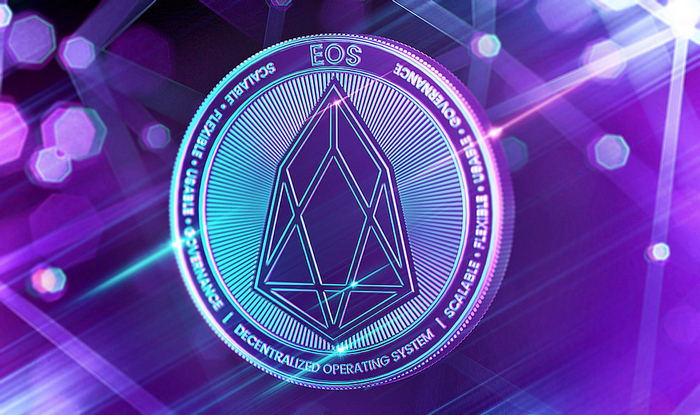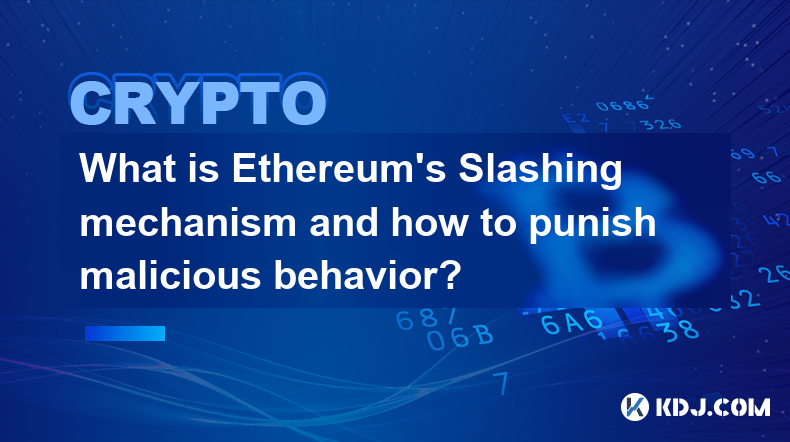-
 Bitcoin
Bitcoin $83,350.2499
4.77% -
 Ethereum
Ethereum $1,566.0202
2.97% -
 Tether USDt
Tether USDt $0.9995
0.01% -
 XRP
XRP $2.0175
2.69% -
 BNB
BNB $586.4033
1.78% -
 Solana
Solana $120.6064
7.12% -
 USDC
USDC $0.9998
0.01% -
 Dogecoin
Dogecoin $0.1598
4.03% -
 TRON
TRON $0.2433
2.96% -
 Cardano
Cardano $0.6234
2.63% -
 UNUS SED LEO
UNUS SED LEO $9.3857
-0.28% -
 Chainlink
Chainlink $12.6297
4.85% -
 Avalanche
Avalanche $19.0868
4.71% -
 Toncoin
Toncoin $2.9317
0.69% -
 Stellar
Stellar $0.2337
1.78% -
 Shiba Inu
Shiba Inu $0.0...01220
4.96% -
 Sui
Sui $2.1816
3.70% -
 Hedera
Hedera $0.1668
-0.28% -
 Bitcoin Cash
Bitcoin Cash $312.7762
7.71% -
 MANTRA
MANTRA $6.4005
-0.43% -
 Litecoin
Litecoin $76.0972
3.24% -
 Polkadot
Polkadot $3.5505
2.51% -
 Dai
Dai $0.9999
0.01% -
 Hyperliquid
Hyperliquid $15.7698
10.07% -
 Bitget Token
Bitget Token $4.2986
2.75% -
 Ethena USDe
Ethena USDe $0.9987
0.01% -
 Pi
Pi $0.6371
8.10% -
 Monero
Monero $206.0921
2.67% -
 Uniswap
Uniswap $5.2263
4.24% -
 OKB
OKB $53.3127
0.50%
What is EOS coin? A comprehensive introduction to EOS coin project in one article
EOS (EOS), developed by Block.one, addresses blockchain scalability limitations with its parallel processing architecture, fast transaction finality, and user-friendly interface.
Oct 23, 2024 at 07:02 pm

What is EOS Coin? A Comprehensive Guide to the EOS Coin Project
1. Overview
EOS (EOS) is a blockchain platform designed to support decentralized applications (dApps). It was developed by Block.one, a blockchain software company led by Dan Larimer. EOS aims to address the scalability, transaction speed, and usability limitations of previous blockchain platforms like Bitcoin and Ethereum.
2. Key Features
- Scalability: EOS uses a parallel processing architecture that enables it to handle thousands of transactions per second.
- Fast Transactions: EOS achieves near-instant transaction finality, reducing the waiting time compared to other blockchains.
- User-Friendly: EOS provides a more user-friendly interface and developer tools to make it easier to build and deploy dApps.
- Delegated Proof-of-Stake (dPoS): EOS uses a dPoS consensus mechanism, where a limited number of validators (block producers) are elected to verify transactions.
3. Technical Specifications
- Blockchain: EOSIO
- Consensus: dPoS
- Transaction Time: Sub-second
- Transactions per Second: Thousands
- Block Size: Up to 2 MB
4. Use Cases
EOS is designed to support a wide variety of dApp use cases, including:
- Social media platforms: Decentralized social networks that give users control over their data.
- Gaming: Games that run on the blockchain, providing players with true ownership of their in-game assets.
- Financial services: Decentralized exchanges, lending platforms, and asset management services.
- Supply chain management: Tracking and managing product movement across the supply chain using blockchain technology.
5. EOS Ecosystem
The EOS ecosystem includes various components, such as:
- EOS.IO Software: The underlying blockchain software that powers the EOS platform.
- EOSIO Toolkit: A set of developer tools for building dApps on EOS.
- EOS Foundation: A non-profit organization that promotes the EOS ecosystem.
- EOS Knight: A block explorer and analytics platform for the EOS blockchain.
6. Tokenomics
EOS coin is the native token of the EOS platform. It can be used to:
- Pay for transaction fees: EOS coins are required to perform transactions on the EOS blockchain.
- Participate in governance: Holders can vote for block producers and influence the direction of the EOS platform.
- Stake to earn rewards: Users can stake their EOS coins to become block producers and earn rewards.
7. Conclusion
EOS is a blockchain platform that aims to provide scalability, fast transactions, and user-friendly features for building and deploying dApps. Its dPoS consensus mechanism, EOSIO software, and growing ecosystem make it a promising platform for a wide range of decentralized applications.
Disclaimer:info@kdj.com
The information provided is not trading advice. kdj.com does not assume any responsibility for any investments made based on the information provided in this article. Cryptocurrencies are highly volatile and it is highly recommended that you invest with caution after thorough research!
If you believe that the content used on this website infringes your copyright, please contact us immediately (info@kdj.com) and we will delete it promptly.
- Can Cardano (ADA) Really Hit $2 in 2025?
- 2025-04-12 07:30:12
- Bitcoin prices fell below a key psychological threshold on Monday, dipping to $79,000
- 2025-04-12 07:30:12
- Tariffs, tariffs, tariffs. Trump's on-again, off-again import levies dominated the week.
- 2025-04-12 07:25:14
- Coldware (COLD) Remains Committed to Decentralization as the World of Cryptocurrency Regulation Heats Up
- 2025-04-12 07:25:14
- Coldware (COLD) May Surpass Ethereum (ETH) as the Second-Largest Cryptocurrency by Market Cap by 2027
- 2025-04-12 07:20:13
- Astar Contribution Score (ACS) Drives Soneium's Ecosystem Growth
- 2025-04-12 07:20:13
Related knowledge

What is Ethereum’s Slashing mechanism and how to punish malicious behavior?
Feb 20,2025 at 03:08am
Key PointsOverview of slashingDifferent types of slashing in EthereumIncentives and consequences of slashingIdentifying and reporting slashed validatorsOngoing discussions and potential improvementsEthereum's Slashing Mechanism: Punishing Malicious BehaviorEthereum's slashing mechanism is an essential tool for ensuring network security and punishing mal...

What is the verifier node of Ethereum and how to become a verifier?
Feb 19,2025 at 06:00pm
The Verifier Node of Ethereum: A Comprehensive GuideKey Points:What is a Verifier Node?How to Become a Verifier NodeResponsibilities and Rewards of a Verifier NodeMinimum Requirements for Becoming a Verifier NodePotential Difficulties in Running a Verifier Node1. What is a Verifier Node?A Verifier Node is an independent entity on the Ethereum network th...

What is Ethereum’s staking, and how to participate and earn money?
Feb 19,2025 at 04:37pm
Key Points:Understanding Ethereum's Staking MechanismSteps to Participate in StakingBenefits and Rewards of StakingSecurity and Risk ConsiderationsTechnical Requirements and Hardware OptionsPotential Challenges and Troubleshooting TipsFAQs on Ethereum StakingWhat is Ethereum's Staking?Proof-of-Stake (PoS) is a consensus mechanism used in blockchain netw...

What is Ethereum’s DAO (Decentralized Autonomous Organization) and how does it work?
Feb 20,2025 at 03:12am
Key PointsDefinition and Structure of a DAOGovernance and Decision-Making in DAOsBenefits and Use Cases of DAOsChallenges and Limitations of DAOsWhat is Ethereum's DAO (Decentralized Autonomous Organization) and How Does It Work?Definition and Structure of a DAOA Decentralized Autonomous Organization (DAO) is an innovative governance and management fram...

What is Ethereum's multi-signature wallet and how to improve security?
Feb 20,2025 at 02:18pm
Key Points:Understanding the Concept of a Multi-Signature WalletBenefits and Drawbacks of Multisig WalletsRequirements for Setting Up a Multisig WalletStep-by-Step Guide to Generating a Multisig WalletImplementing Strategies for Enhanced Security1. Understanding the Concept of a Multi-Signature WalletA multi-signature (multisig) wallet in the Ethereum e...

What is Ethereum's oracle and how to provide data for smart contracts?
Feb 21,2025 at 01:30am
Key Points:Understanding the concept of oracles in EthereumExploring different types of oraclesDetailed guide on how to provide data for smart contractsAddressing potential challenges and considerationsWhat is Ethereum's Oracle?Oracles are crucial components in the Ethereum ecosystem, enabling smart contracts to access real-world data and off-chain even...

What is Ethereum’s Slashing mechanism and how to punish malicious behavior?
Feb 20,2025 at 03:08am
Key PointsOverview of slashingDifferent types of slashing in EthereumIncentives and consequences of slashingIdentifying and reporting slashed validatorsOngoing discussions and potential improvementsEthereum's Slashing Mechanism: Punishing Malicious BehaviorEthereum's slashing mechanism is an essential tool for ensuring network security and punishing mal...

What is the verifier node of Ethereum and how to become a verifier?
Feb 19,2025 at 06:00pm
The Verifier Node of Ethereum: A Comprehensive GuideKey Points:What is a Verifier Node?How to Become a Verifier NodeResponsibilities and Rewards of a Verifier NodeMinimum Requirements for Becoming a Verifier NodePotential Difficulties in Running a Verifier Node1. What is a Verifier Node?A Verifier Node is an independent entity on the Ethereum network th...

What is Ethereum’s staking, and how to participate and earn money?
Feb 19,2025 at 04:37pm
Key Points:Understanding Ethereum's Staking MechanismSteps to Participate in StakingBenefits and Rewards of StakingSecurity and Risk ConsiderationsTechnical Requirements and Hardware OptionsPotential Challenges and Troubleshooting TipsFAQs on Ethereum StakingWhat is Ethereum's Staking?Proof-of-Stake (PoS) is a consensus mechanism used in blockchain netw...

What is Ethereum’s DAO (Decentralized Autonomous Organization) and how does it work?
Feb 20,2025 at 03:12am
Key PointsDefinition and Structure of a DAOGovernance and Decision-Making in DAOsBenefits and Use Cases of DAOsChallenges and Limitations of DAOsWhat is Ethereum's DAO (Decentralized Autonomous Organization) and How Does It Work?Definition and Structure of a DAOA Decentralized Autonomous Organization (DAO) is an innovative governance and management fram...

What is Ethereum's multi-signature wallet and how to improve security?
Feb 20,2025 at 02:18pm
Key Points:Understanding the Concept of a Multi-Signature WalletBenefits and Drawbacks of Multisig WalletsRequirements for Setting Up a Multisig WalletStep-by-Step Guide to Generating a Multisig WalletImplementing Strategies for Enhanced Security1. Understanding the Concept of a Multi-Signature WalletA multi-signature (multisig) wallet in the Ethereum e...

What is Ethereum's oracle and how to provide data for smart contracts?
Feb 21,2025 at 01:30am
Key Points:Understanding the concept of oracles in EthereumExploring different types of oraclesDetailed guide on how to provide data for smart contractsAddressing potential challenges and considerationsWhat is Ethereum's Oracle?Oracles are crucial components in the Ethereum ecosystem, enabling smart contracts to access real-world data and off-chain even...
See all articles























































































